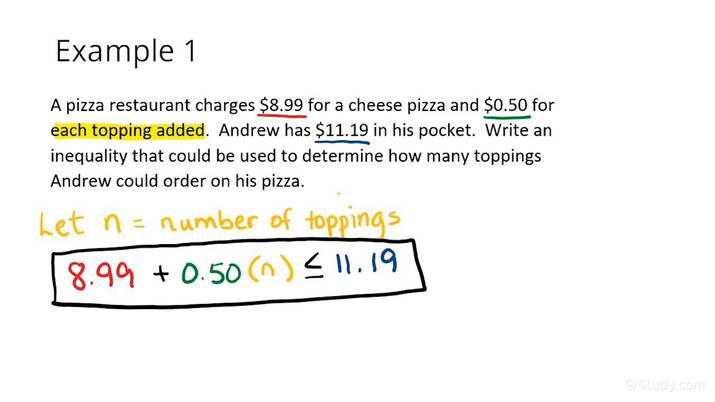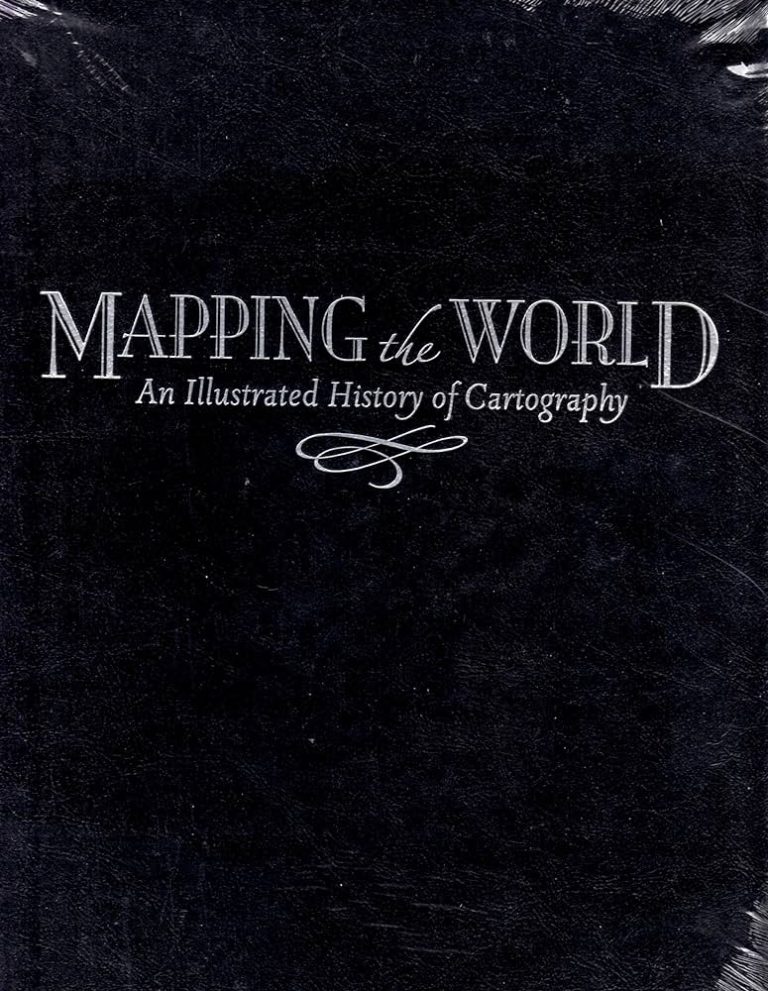Writing An Inequality For A Real-world Situation
Writing an inequality for a real-world situation requires the use of mathematical symbols to express a statement about the relative values of two or more quantities. For example, an inequality can be used to represent a situation where a certain amount of money must be divided among two or more people. In this case, the inequality could be expressed as x + y ≤ z, where x and y represent the money given to each individual and z represents the total amount of money available. This statement can then be used to determine a range of possible values that each individual’s share can take.
Defining Inequality
In mathematics, an inequality is a statement that two values are not equal. Inequalities are used to describe real-world situations where one value is greater than, less than, or not equal to another. When writing an inequality for a real-world scenario, it’s important to consider all of the variables involved and decide whether the relationship between them is one of equality or inequality.
To begin, it’s important to understand the different types of inequalities. There are five main types: greater than, less than, greater than or equal to, less than or equal to, and not equal to. Knowing which type of inequality to use in a given situation is key to accurately expressing the relationship between values.
Next, it’s important to understand how to use variables in an inequality. Variables are used to represent unknown values in equations and inequalities. They are typically represented with uppercase letters and can be used to represent any value.
Finally, it’s important to consider the context of the real-world situation when writing an inequality. Knowing what values are being compared and the relationship between them is key to accurately expressing the inequality in mathematical terms. Once all of the variables and context have been considered, writing an inequality for the given situation should be fairly straightforward.
Components of an Inequality
Inequalities are mathematical expressions that use symbols to compare two values. They’re used to describe real-world situations where the values of one or more variables can be greater than, less than, or equal to each other. When writing an inequality for a real-world situation, there are certain components that need to be taken into consideration.
The first component is the inequality symbol. Common symbols used for inequalities include greater than (>), less than (<), greater than or equal to (≥), and less than or equal to (≤). The inequality symbol will determine the comparison being made between the two values.
The second component is the variables. Variables are the unknown numbers in an equation that can be changed. For example, if you wanted to write an inequality to describe a situation where someone had to buy a minimum of 10 items, the variable would be “x”.
The third component is the constants. Constants are the fixed numbers in an equation that don’t change. For example, if you wanted to write an inequality to describe a situation where someone had to buy a minimum of 10 items, the constant would be “10”.
The fourth component is the solution set. This is the set of values that satisfy the inequality. This can be determined by plugging in various values and seeing if they satisfy the inequality.
By understanding these components of an inequality, it’s possible to accurately write an inequality for a real-world situation. This can help to make the situation easier to understand and solve.
Identifying a Real-world Situation
Understanding how to write an inequality for a real-world situation can be tricky, but with the right attitude and approach, it can be done. The first step in tackling this challenge is to identify a real-world situation in which the inequality can be applied. This can be anything from an everyday problem to a complex mathematical equation. It is important to note that identifying the situation is the foundation of writing an inequality, as without a clear understanding of the problem, it can be difficult to create an accurate solution.
When deciding on a real-world situation, look for one that can be represented in a way that is both easily understood and solvable. Factors such as budgeting, comparing values, and making decisions can all be used to express a real-world situation as an inequality. Additionally, it is important to consider the variables that will be used to describe the situation and the solutions that are needed. This will help to ensure that the inequality accurately reflects the real-world situation that is being addressed.
By taking the time to identify a real-world situation, it is possible to create a meaningful and useful inequality. This is the foundation for writing an inequality for a real-world situation and can provide the basis for a solution that accurately reflects the situation.

Constructing an Inequality to Represent the Situation
Writing an inequality for a real-world situation is an essential skill for anyone who wants to understand the logic behind various mathematical problems. Inequality is a statement that expresses a relationship between two values where one value is greater or less than the other. Inequalities can also be used to represent a real-world situation. To do so, one needs to identify the variables in the situation and determine the appropriate inequality sign that matches the given conditions.
When writing an inequality for a real-world situation, it is important to consider the given conditions and identify the variables that are present in the situation. Once the variables have been identified, it is then necessary to determine the appropriate inequality sign that accurately describes the conditions. It is also important to consider any other information that is present in the given problem and adjust the inequality accordingly.
Once the inequality has been written, it is important to draw a graph to represent the inequality and its solution. This will help visualize the situation and make it easier to understand the solution. Additionally, the graph can be used to determine the range of values that satisfy the inequality.
By understanding the principles behind writing an inequality for a real-world situation, one can effectively use them to solve various mathematical problems. With the help of this skill, one can easily identify the relationships between the variables and draw a graph to represent the solution.
Solving the Inequality
When it comes to writing an inequality for a real-world situation, the key is to identify the inequality sign, figure out the unknown value, and then use the given information to solve the inequality. An inequality is an equation with an unknown value that follows a certain set of rules, such as “greater than” or “less than”. To start solving the inequality, you need to identify the inequality sign and then use the given information to find the unknown value.
Once you have identified the inequality sign, you can use the given information to find the unknown value. This can be done by using algebraic equations or by using a graph. Using algebraic equations, you can use the rules of algebra to find the unknown value, while using a graph, you can plot out the given information on the graph and then identify the unknown value.
Once you have found the unknown value, you can solve the inequality. This involves using the inequality sign and the unknown value to determine what values the equation is true for. This can be done by graphing the equation and identifying the points that are within the given range or by using algebraic equations to determine the range of values.
By following these steps, you can write an inequality for a real-world situation. It is important to remember to identify the inequality sign, use the given information to find the unknown value, and then use the inequality sign and the unknown value to solve the inequality. Doing this will ensure that you have a properly written inequality that accurately describes the real-world situation.
Applications of Inequality in Real-world Solutions
Inequality is a commonly used mathematical tool that can be applied to real-world scenarios. When used correctly, it can be a powerful method for solving complex problems. Inequalities can be used to model various types of relationships between two variables and can be used to analyze a variety of real-world scenarios. From finding the maximum or minimum value of a function to determining the best solution for a given problem, inequalities can be used to model a wide range of real-world scenarios.
In mathematical terms, an inequality is a statement that one value is greater than, less than, or equal to another value. Inequality can be used to represent a wide range of relationships between two variables. It can be used to determine the minimum and maximum value of a function, the best solution to a given problem, or the range of values of a certain variable. Inequalities can also be used to compare two values, determine the rate of change in a function, and even to measure the distance between two points.
Inequalities can be used to solve a variety of real-world problems, including those related to finance, engineering, economics, and even politics. For example, inequalities can be used to determine the minimum or maximum value of a given investment, calculate the optimal rate of return for a given investment, and even to determine the most effective way to allocate resources for a project. Additionally, inequalities can be used to determine the most efficient route or the most economical solution for a given problem.
In conclusion, inequalities are a powerful mathematical tool that can be used to solve a variety of real-world problems. By understanding the basics of inequality and the different applications, you can apply this mathematical tool to a variety of scenarios and find the best solution for any given problem.
FAQs About the Writing An Inequality For A Real-world Situation
Q1: How do I write an inequality for a real-world situation?
A1: You can write an inequality for a real-world situation by using symbols to represent the relationship between two values. For example, if you want to represent the fact that a number must be greater than another number, you would use the symbol “>”.
Q2: How do I know when to use the symbols “>” or “<”?
A2: The symbols “>” and “<” represent greater than and less than, respectively. Use the “>” symbol when you want to represent a value that must be greater than another value, and use the “<” symbol when you want to represent a value that must be less than another value.
Q3: What other symbols can I use to write an inequality for a real-world situation?
A3: Other symbols you can use to write an inequality for a real-world situation include “≥” and “≤” which represent greater than or equal to and less than or equal to, respectively. Additionally, the symbols “≠” and “=” can be used to represent not equal to and equal to, respectively.
Conclusion
Writing inequalities for real-world situations can be a useful skill to have when trying to solve problems. It can help you visualize a problem and find solutions that are both logical and efficient. When writing an inequality, it is important to consider the given information and the desired solution. Additionally, it is important to identify the variables, the signs of the inequality, and the range of the solution. With practice, writing inequalities for real-world situations can become second nature.






